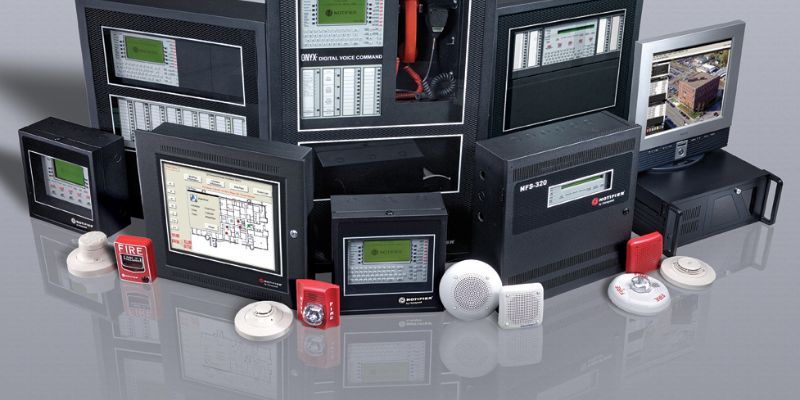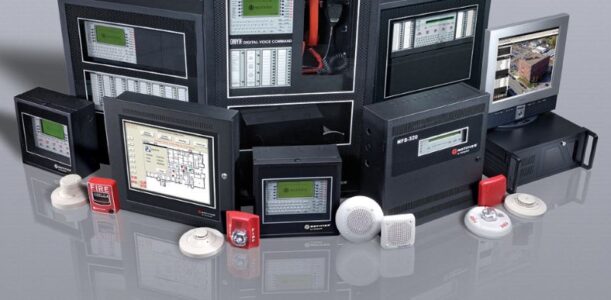
Fire alarm systems have significantly evolved from basic alert mechanisms to sophisticated, data-driven technologies. This transformation enables building owners and superintendents to harness valuable insights for enhancing safety protocols and operational efficiency.
Understanding Smart Fire Alarm Systems
Smart fire alarm systems integrate advanced sensors, Internet of Things (IoT) connectivity, and real-time data transmission to monitor and respond to environmental changes within a building. Key features include:
- Advanced Sensors: These detect various indicators of fire, such as smoke, heat, and gas levels, with heightened accuracy.
- IoT Connectivity: Enables devices to communicate over a network, facilitating centralized monitoring and control.
- Real-Time Data Transmission: Allows for immediate alerting and data analysis, supporting swift decision-making.
Functionality of Smart Fire Alarm Systems
Smart fire alarm systems operate by continuously monitoring environmental conditions through their sensors. Upon detecting anomalies indicative of a potential fire, the system analyzes the data to assess the threat level. If a hazard is confirmed, alerts are communicated to building management systems and relevant personnel, enabling prompt and coordinated responses.
By leveraging the capabilities of smart fire alarm systems, building stakeholders can gain deeper insights into safety conditions and implement more effective fire prevention and response strategies.
Types of Data Collected by Smart Fire Alarm Systems
Smart fire alarm systems gather a variety of data to enhance building safety and operational efficiency. The primary categories of data collected include:
Environmental Data
- Smoke Levels: Advanced sensors monitor the concentration of smoke particles in the air, enabling early detection of potential fires.
- Temperature Fluctuations: Continuous tracking of temperature changes helps identify abnormal heat patterns that may indicate a fire hazard.
- Gas Concentrations: Detection of gases such as carbon monoxide or other hazardous substances provides critical information for assessing fire risks.
System Performance Data
- Device Status: Regular diagnostics report on the operational health of each component within the fire alarm system.
- Battery Life: Monitoring battery levels ensures that wireless devices remain powered and functional.
- Connectivity Strength: Assessing the strength of connections between devices and the central system helps maintain reliable communication.
Occupancy Data
- Building Usage Patterns: Data on how different areas of the building are utilized can inform safety protocols and system configurations.
- Occupant Movements: Understanding the flow and density of occupants aids in optimizing evacuation plans and identifying high-traffic zones that may require additional safety measures.
By collecting and analyzing these data types, smart fire alarm systems provide building owners and superintendents with actionable insights to enhance safety, improve system maintenance, and ensure compliance with fire safety regulations.
Benefits of Analyzing Fire Alarm System Data
Smart fire alarm systems collect extensive data that, when analyzed, offer significant advantages for building safety and management:
Early Detection and Prevention
By continuously monitoring environmental data such as smoke levels, temperature fluctuations, and gas concentrations, these systems can identify potential fire hazards before they escalate. This proactive approach allows building managers to address issues promptly, reducing the likelihood of fire incidents.
Enhanced Emergency Response
During emergencies, smart fire alarm systems provide first responders with precise information, including the exact location and severity of the incident. This detailed data enables faster response times and more effective strategies to mitigate damage and ensure occupant safety.
Predictive Maintenance
Analyzing system performance data—such as device status, battery life, and connectivity strength—facilitates predictive maintenance. Building managers can schedule maintenance activities based on actual system needs, preventing malfunctions and extending the lifespan of the equipment.
Regulatory Compliance
Maintaining detailed records of system performance and incidents ensures adherence to safety standards. Comprehensive documentation aids in demonstrating compliance during inspections and audits, thereby avoiding potential legal and financial penalties.
Implementing Data-Driven Safety Strategies
To maximize the benefits of smart fire alarm systems, building owners and superintendents should consider the following strategies:
Integration with Building Management Systems (BMS)
Seamless integration of fire alarm systems with BMS allows for centralized monitoring and control. This connectivity ensures that data from various building systems is consolidated, providing a holistic view of building operations and enhancing coordinated responses during emergencies.
Data Analytics Tools
Utilizing specialized software solutions assists in interpreting the vast amounts of data generated by smart fire alarm systems. These tools can identify patterns, predict potential issues, and support informed decision-making to improve building safety.
Regular Training for Staff
It’s essential to train building staff to understand and act upon data insights. Regular training sessions ensure that personnel can respond effectively to alerts and maintain the system’s optimal performance.
By implementing these data-driven strategies, building owners and superintendents can significantly enhance safety protocols, ensure regulatory compliance, and optimize the performance of their fire alarm systems.
Challenges and Considerations
While smart fire alarm systems offer numerous benefits, building owners and superintendents should be mindful of the following challenges:
Data Privacy and Security
Integrating Internet of Things (IoT) devices in fire alarm systems necessitates stringent data protection measures. Ensuring that collected data is securely stored and transmitted is crucial to prevent unauthorized access and potential breaches. Implementing robust encryption protocols and regularly updating system software can mitigate these risks.
System Compatibility
When upgrading to smart fire alarm systems, ensuring compatibility with existing building infrastructure is essential. Assessing the current systems and planning for seamless integration can prevent operational disruptions and additional costs. Consulting with professionals during the planning phase can facilitate a smoother transition.
Cost Implications
Transitioning to smart fire alarm systems involves initial investments in equipment and installation. However, these costs can be offset by long-term benefits such as reduced maintenance expenses, enhanced safety, and potential insurance premium reductions. Evaluating the total cost of ownership and potential return on investment is advisable.
Leveraging data from smart fire alarm systems provides building owners and superintendents with actionable insights to enhance safety, optimize maintenance, and ensure regulatory compliance. By addressing considerations related to data security, system compatibility, and costs, stakeholders can effectively implement these advanced systems. Embracing data-driven approaches is a proactive step toward safeguarding occupants and assets in today’s dynamic building environments.
Enhancing building safety through data-driven insights is crucial in today’s environment. By adopting smart fire alarm systems, you can proactively manage risks and ensure compliance with safety standards. Contact us to learn how HRSS/SMG can assist in upgrading your building’s fire safety infrastructure.



